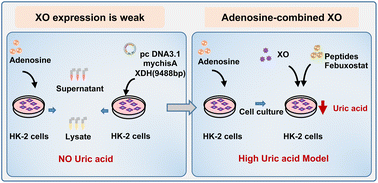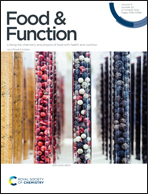A modified xanthine oxidase cell model for screening of antihyperuricemic functional compounds
Abstract
Hyperuricemia is a purine metabolism disorder, with increasing prevalence worldwide. Here, a high throughput cell model for screening of antihyperuricemic compounds was set up. Human kidney cells (HK2 cells) were stimulated with adenosine and the resulting supernatant and lysate were then analyzed using high performance liquid chromatography (HPLC). The results showed that hypoxanthine content was increased in both HK2 cells supernatant and xanthine oxidase (XO)-overexpressing HK2 cells lysate, but no uric acid was detected due to lower endogenous XO content in these cells. Exogenous XO was added to the supernatant, and then used to evaluate the antihyperuricemic activity of Febuxostat and two the previously identified peptides, Pro-Gly-Ala-Cys-Ser-Asn (PGACSN) and Trp-Met-Leu (WML). By adding exogenous XO, this combined-adenosine-XO-induced hyperuricemia model was optimized and established, and the Febuxostat and peptides were confirmed to significantly reduce uric acid production in the HK2 cells supernatant (p < 0.05). Therefore, this cell model could be recommended for screening potential bioactive antihyperuricemic compounds.



 Please wait while we load your content...
Please wait while we load your content...